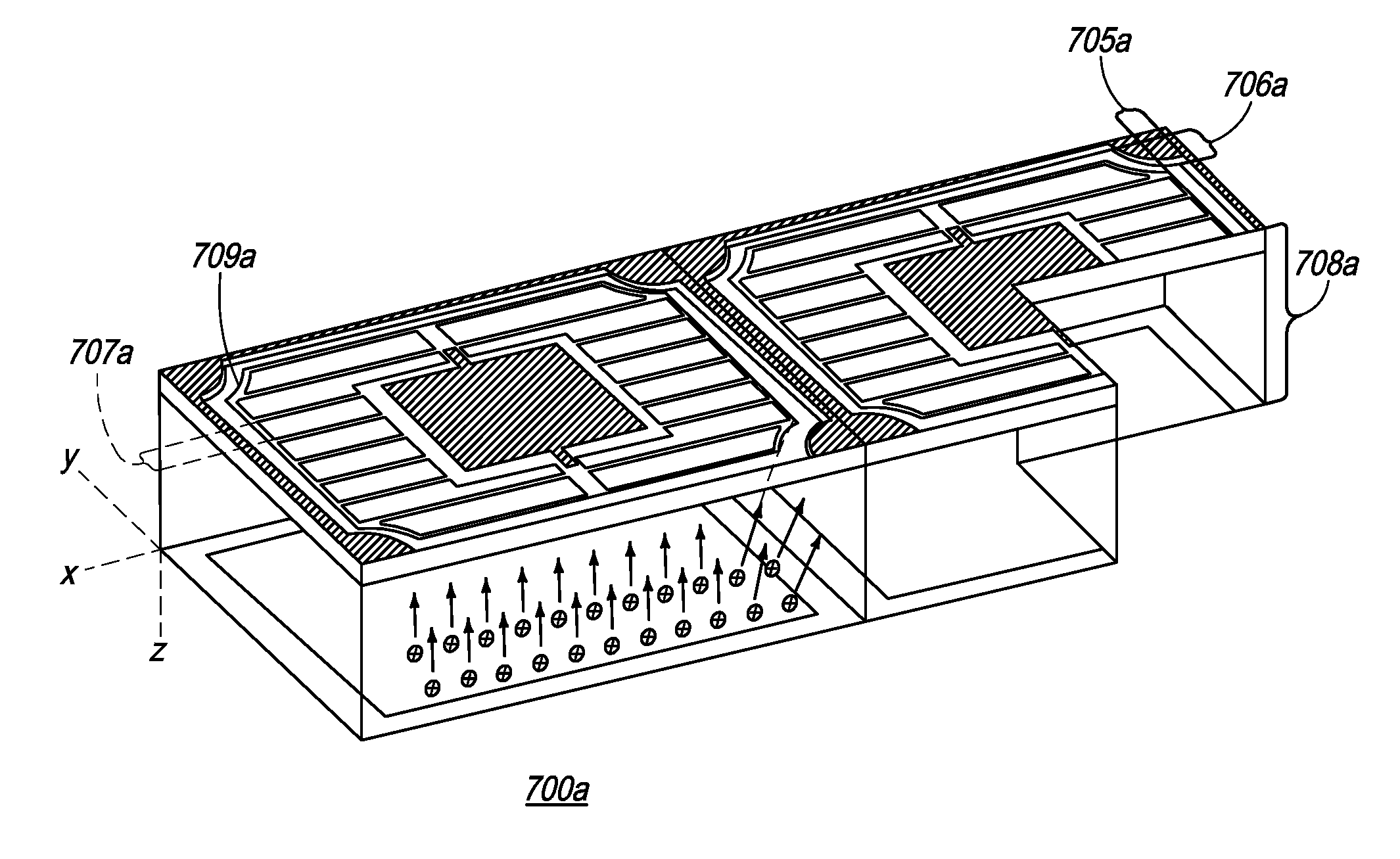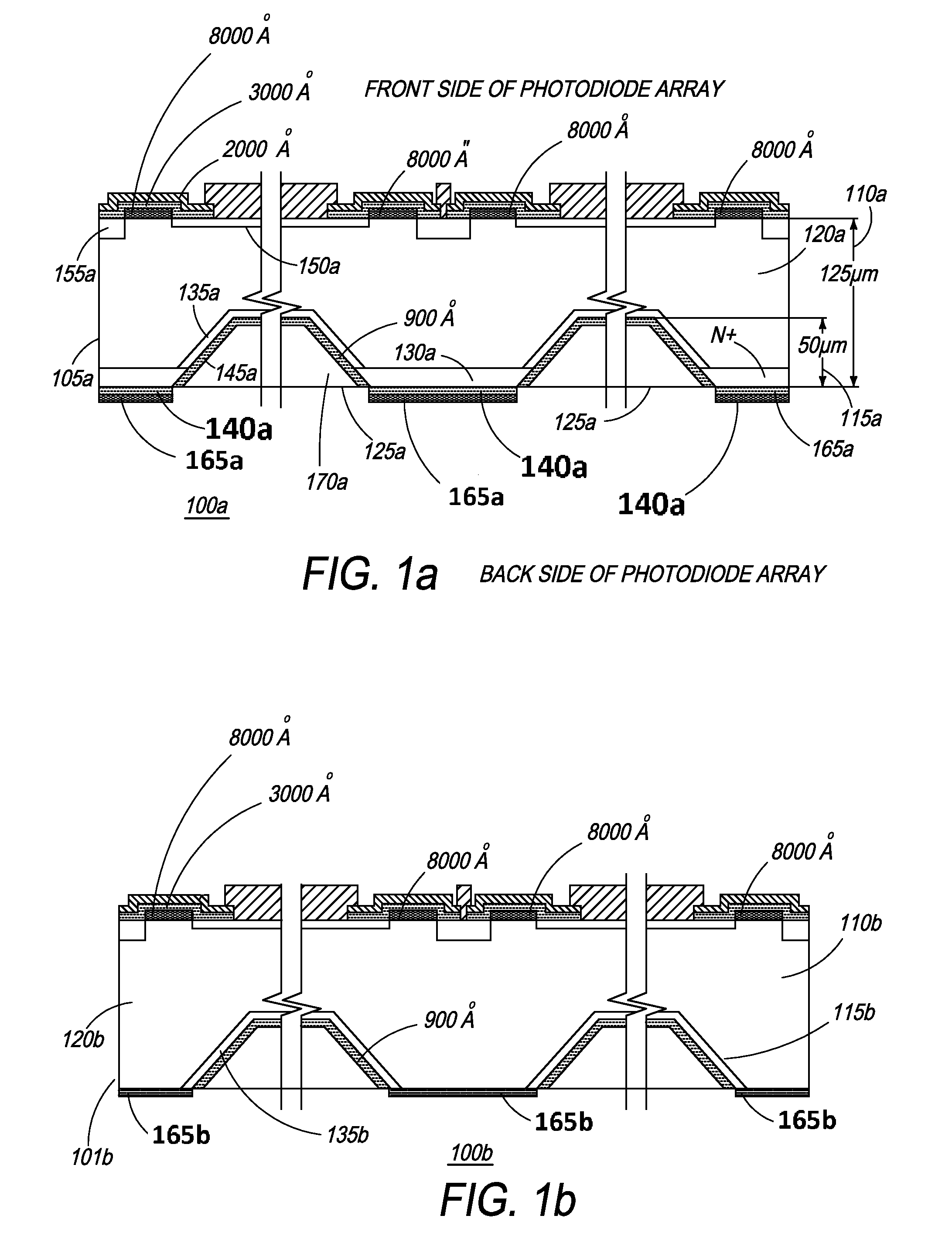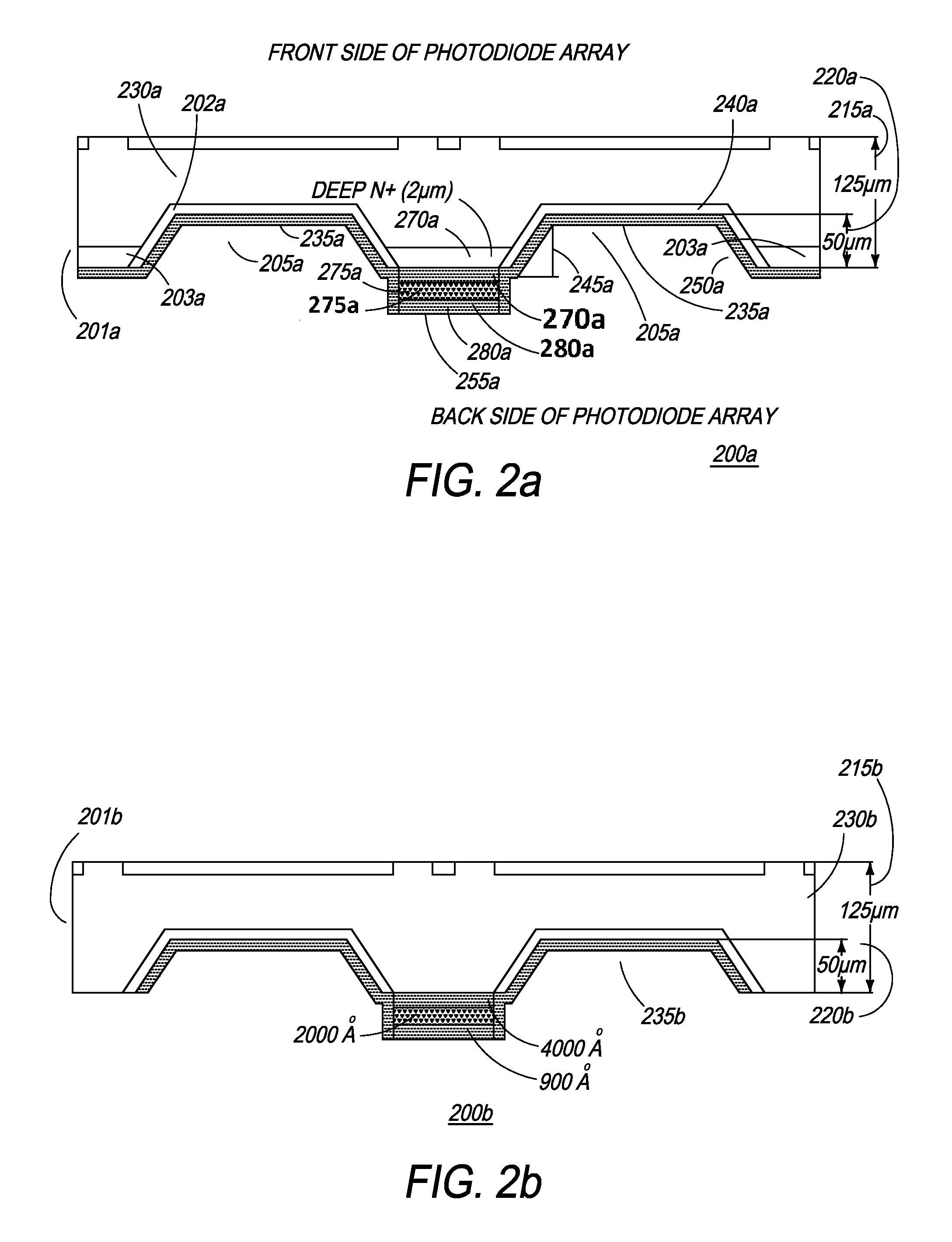Thin wafer detectors with improved radiation damage and crosstalk characteristics
a detector and thin wafer technology, applied in the field of thin wafer detectors with improved radiation damage and crosstalk characteristics, can solve the problems of affecting the performance of detectors, transistors and integrated circuits, affecting the width of the depletion region, and increasing reverse bias current and forward voltage, so as to reduce radiation damage susceptibility, reduce crosstalk, and reduce the effect of dark curren
- Summary
- Abstract
- Description
- Claims
- Application Information
AI Technical Summary
Benefits of technology
Problems solved by technology
Method used
Image
Examples
second embodiment
[0066]Referring now to FIG. 1b, a photodiode array 100b is depicted. Photodiode array 100b comprises first region 110b, second region 115b, and third region 120b, dimensional details of which are discussed above with reference to FIG. 1a. In addition, the doping materials used, masking layers formed, and etching techniques adopted to form the 3-D microstructures have already been explained above with reference to FIG. 1a. In the manufacture of photodiode array 100b, however, only a single first masking layer is applied to the back side of the photodiode array. For example, and by no way of limitation, the single masking layer 165b is preferably Si3N4 and of a thickness of 4000 Å. In addition, second region 115b comprises only a shallow n+ region 135b.
[0067]Referring toFIG. 3, another embodiment of the photodiode array of the present invention is illustrated. The back side illuminated, front side contact (BSL-FSC) photodiodes are implemented in an array and have superior performance...
third embodiment
[0101]In a third embodiment, as shown in FIG. 7c, photodiode array 700c may have the following variable characteristics, assuming an x-y-z axis as drawn near photodiode 700c wherein the x-axis represents the length of the wafer, the y-axis represents the width of the wafer, and the z-axis represents the height of the wafer: p+ to n+ separation 705c in the x-direction of 0.075 mm; p+ to n+ separation 706c in a y-direction of 0.075 mm; the width between two contiguous p+ fishbone ribs 707c, also in a y-direction, of 0.109 mm; and wafer height 708c in a z-direction of approximately 0.125 mm. Also shown in FIG. 7c is periphery frame bone 709c, which surrounds the fishbone rib structure.
[0102]FIG. 8a depicts a top view of the photodiode array 800 of the present invention. Each square box represents diode elements 802 within photodiode array 800. In one embodiment, photodiode array 800 is arranged in the form of a 16 by 16 matrix with a total of 256 diode elements 802 on a silicon wafer s...
PUM
| Property | Measurement | Unit |
|---|---|---|
| thickness | aaaaa | aaaaa |
| thickness | aaaaa | aaaaa |
| thickness | aaaaa | aaaaa |
Abstract
Description
Claims
Application Information
 Login to View More
Login to View More - R&D
- Intellectual Property
- Life Sciences
- Materials
- Tech Scout
- Unparalleled Data Quality
- Higher Quality Content
- 60% Fewer Hallucinations
Browse by: Latest US Patents, China's latest patents, Technical Efficacy Thesaurus, Application Domain, Technology Topic, Popular Technical Reports.
© 2025 PatSnap. All rights reserved.Legal|Privacy policy|Modern Slavery Act Transparency Statement|Sitemap|About US| Contact US: help@patsnap.com



